Niku Dofu is a hearty and nutritious dish that combines the rich flavors of meat with sweet and savory Japanese seasonings. The flavors soak into the tofu and vegetables, offering a satisfying dining experience.
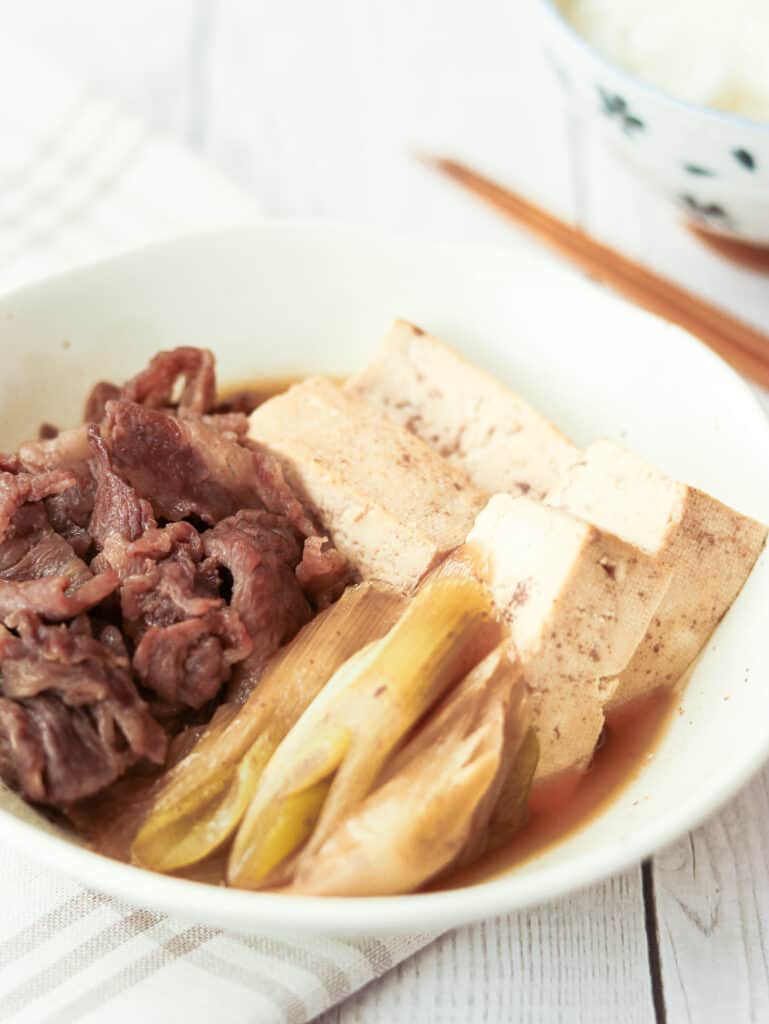
Jump to:
What is Niku Dofu?
Niku Dofu is a dish made by simmering meat, tofu, and vegetables in traditional Japanese seasonings. "Niku" means meat, and "Dofu" is another way to say tofu. The correct pronunciation is 'niku dōfu.' It combines the nutritional benefits of meat, tofu, and vegetables, making it a healthy and satisfying dish.
Originating in Kyoto, Japan, this dish was traditionally made with beef, tofu, and kujō negi (a type of Japanese leek that is a specialty of Kyoto). However, as it has spread throughout Japan, it is now also commonly prepared with pork instead of beef and naganegi (Japanese leeks) in place of kujō negi. Here, I'm sharing a recipe using beef and naganegi (regular leeks can be substituted), but you can adjust the ingredients to suit your preference.
Differences from sukiyaki
In Japan, there is a dish often mentioned as being similar to niku dofu; that dish is Sukiyaki. The ingredients and seasonings used in both dishes are almost the same, but they are considered distinct dishes. The major difference between the two is that sukiyaki is a one-pot dish, while niku dofu is typically served with rice and side dishes.
Additionally, unlike sukiyaki, niku dofu is not typically eaten by dipping its ingredients into beaten eggs. (You might be surprised, but in sukiyaki, the ingredients are dipped into beaten eggs.)
Additional ingredients
The most common vegetable used in niku dofu is Japanese leeks, but onions, mizuna (Japanese mustard greens), and shungiku (crown daisies, similar to bitter spinach) are also sometimes added. Additionally, shimeji mushrooms, enoki mushrooms, and konjac noodles can be included as well.
You can add these ingredients according to your preference, but the main focus of this dish is on the meat and tofu. Therefore, it is recommended not to add too many extras.
Simple guide to otoshi-buta (drop lid)
When making Japanese simmered dishes, it is common to use an otoshi-buta (drop lid).
An otoshi-buta is a lid that sits directly on top of the ingredients in a pot or pan. Placing the lid directly on the ingredients allows the cooking liquid underneath to circulate more evenly, resulting in more efficient simmering with less liquid.
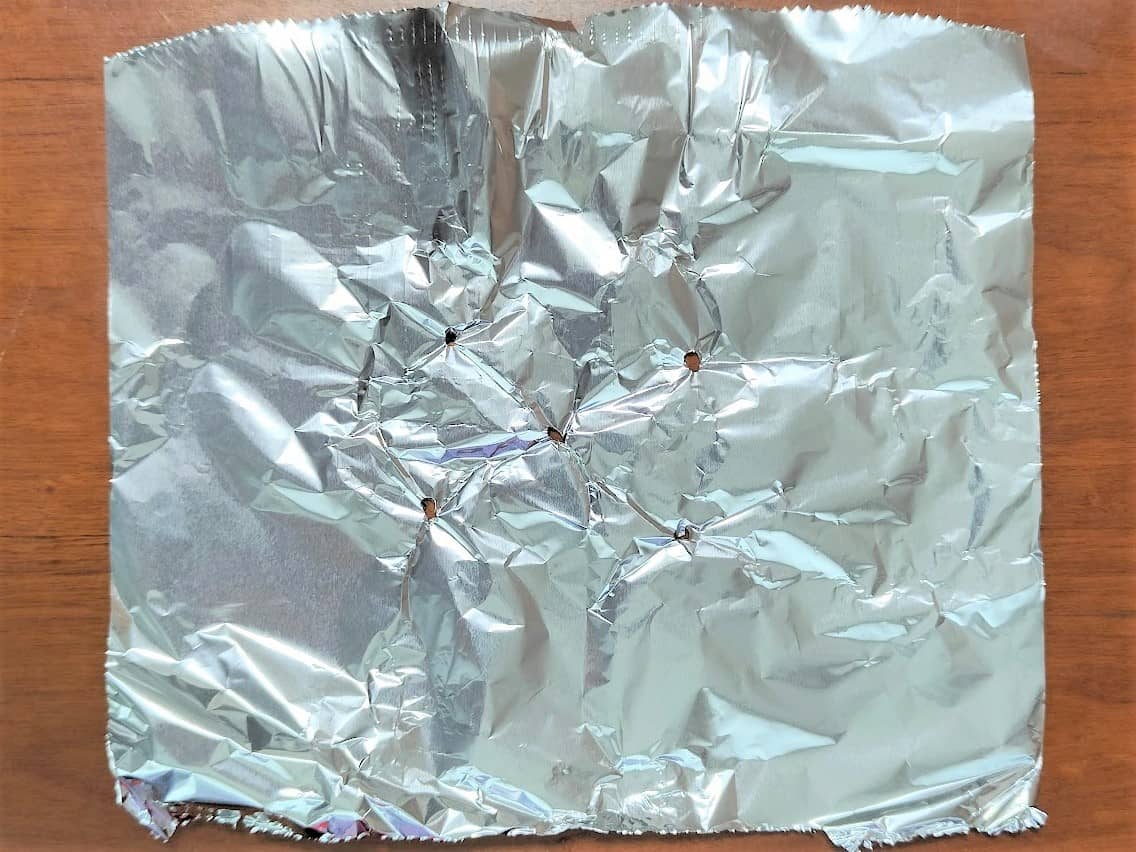
Commercial versions are available, but you can easily make one yourself by simply poking one or more holes in a sheet of aluminum foil—as shown in the photo above. The holes help prevent the otoshi-buta from floating up due to steam pressure. Since it is easy to make, I encourage you to give it a try.
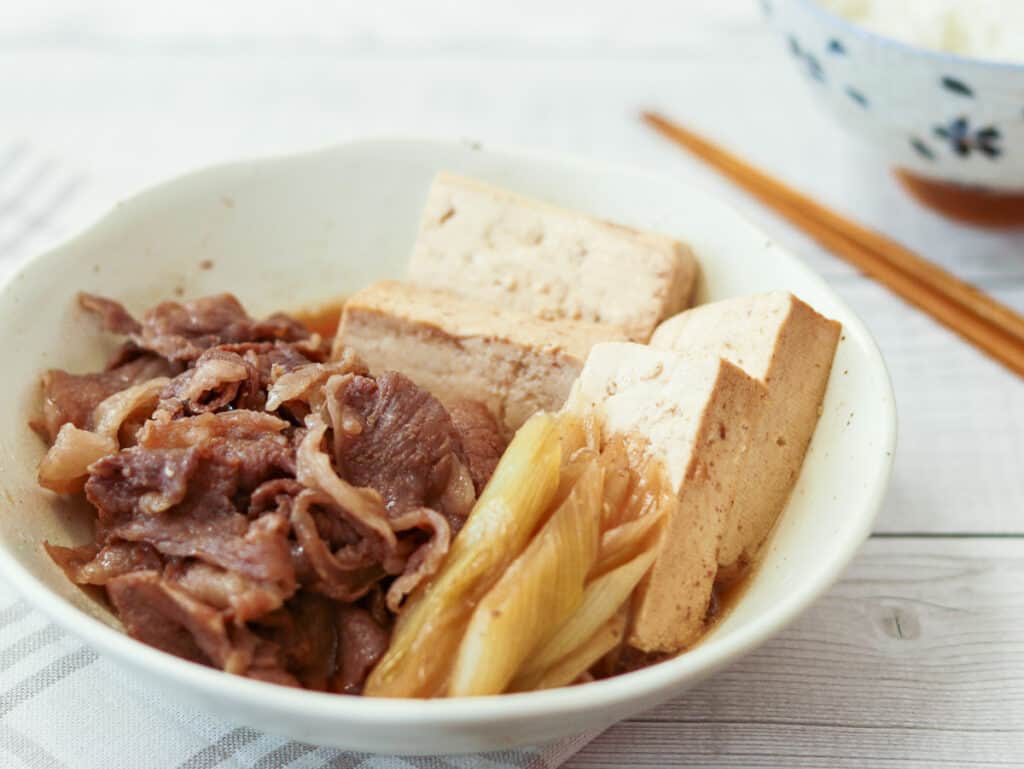
📋Step-by-step recipe
Equipment
- otoshi-buta (drop-lid) (You can easily make one by following the instructions above. If that seems like too much trouble, you can simply use a regular lid instead.)
Ingredients
- 6.3 oz thinly sliced beef
- 10.6 oz momen tofu (firm tofu)
- 3.5 oz Japanese leek (naganegi) (it can be substituted with regular leek)
- ⅗ cup water
Seasonings:
- 2 Tbsp sake
- 1 Tbsp mirin
- 1 ½ Tbsp sugar
- 3 Tbsp soy sauce
Instructions
🕒 Total: 20 mins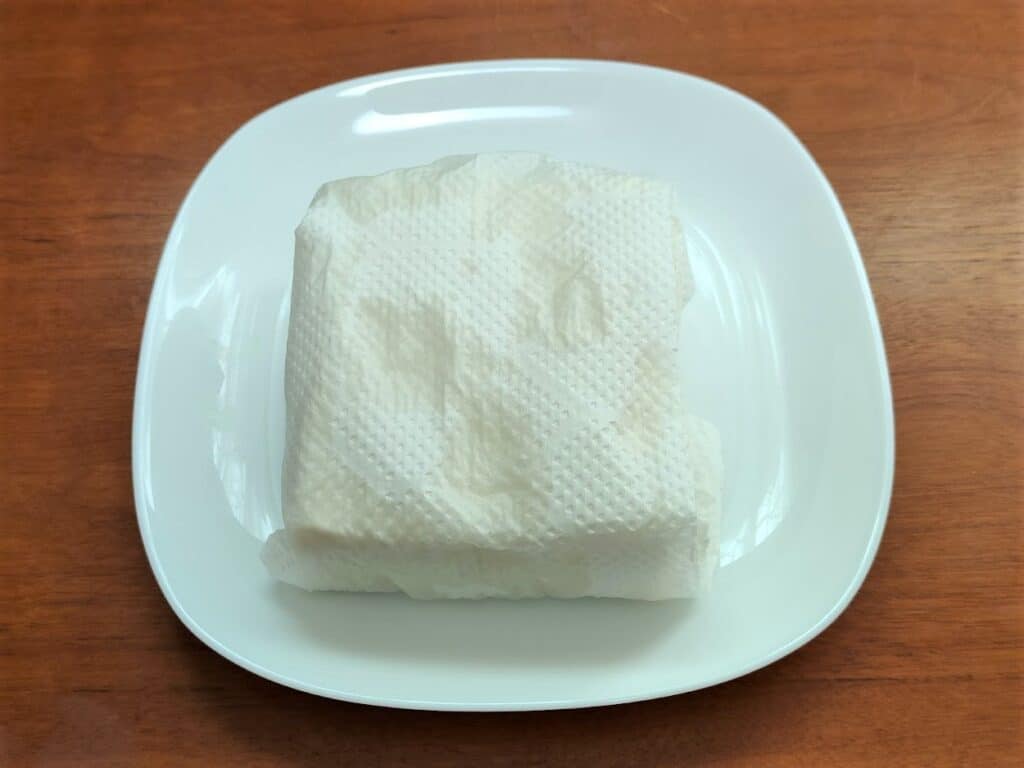
Step 1
Wrap tofu in paper towels, place it on a microwave-safe plate without plastic wrap, and microwave on medium power (500W) for 2 minutes. Then, remove the tofu and let it cool.
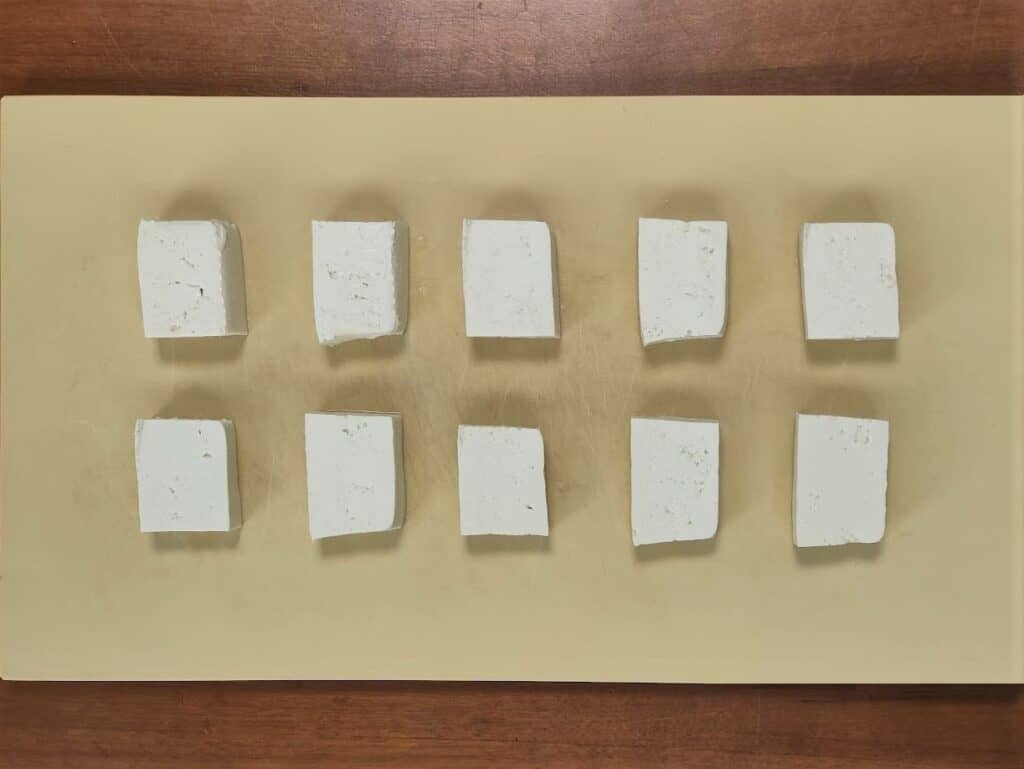
Step 2
Cut the tofu into pieces about ⅘ inch (2 cm) thick.
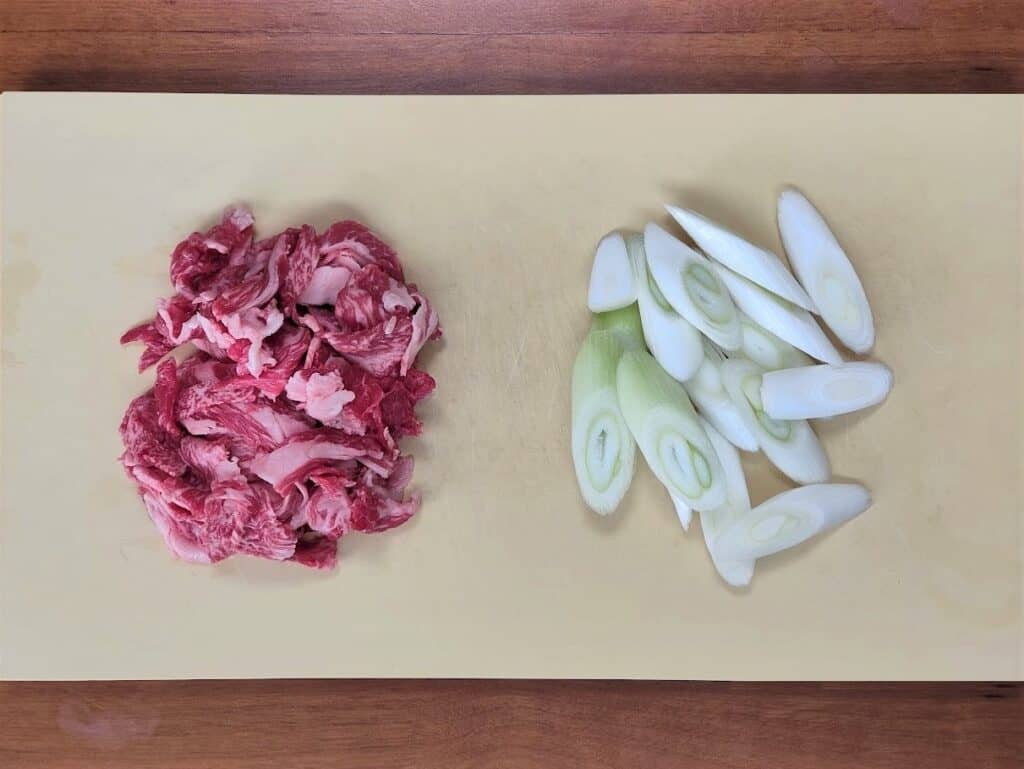
Step 3
Cut beef into pieces 2-inches (5 cm) wide. Slice Japanese leek diagonally into ⅖-inch (1 cm) pieces.
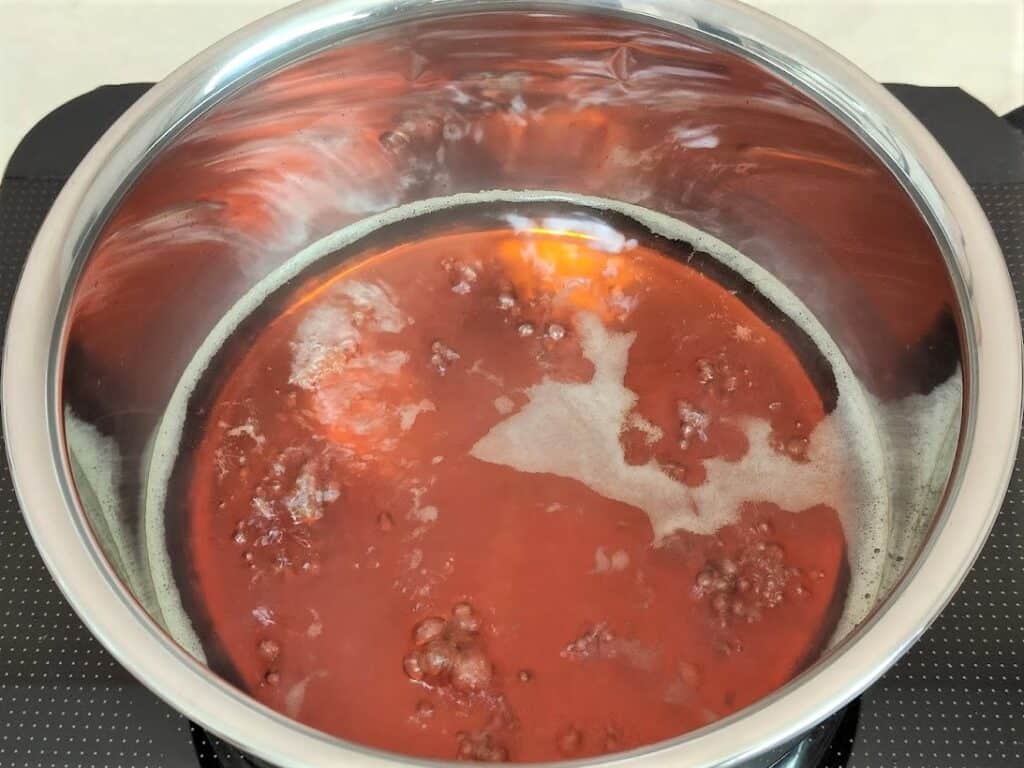
Step 4
Put water and seasonings (sake, mirin, sugar, and soy sauce) in a pot and bring it to a boil.
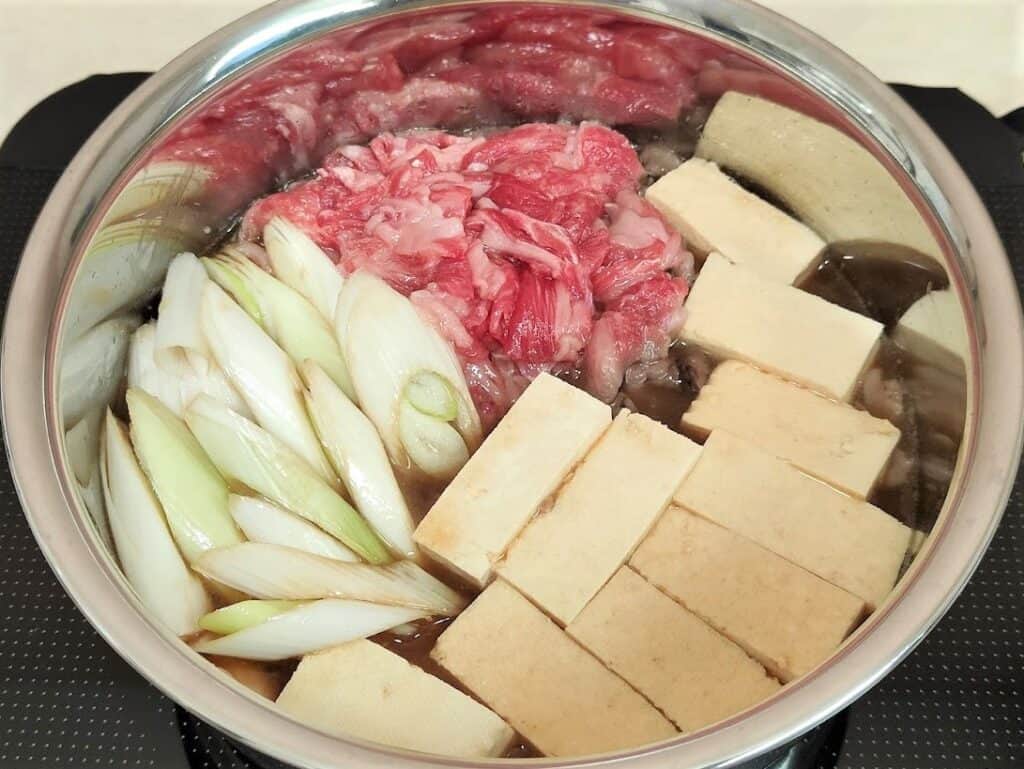
Step 5
Once boiling, add the beef, tofu, and leeks, and let it simmer over low heat for 10 minutes, covering it with an otoshi-buta.
To store
You can store it in the refrigerator for up to 3 days.
Tips on how to make
- Tofu should be drained. This process helps prevent the dish from becoming watery and allows the flavors to be absorbed more easily. While this recipe suggests using a microwave, there are alternative methods available. For more details, please refer to the linked page titled "Tofu Steak."
- After adding the beef to the pot, let it simmer over low heat. Cooking it slowly will help prevent the beef from becoming tough.
If you try this recipe, I’d love to hear what you think. Please consider leaving a review and star rating in the comments below. If you enjoyed it, I’d really appreciate it if you shared it with your friends.
Recipe card
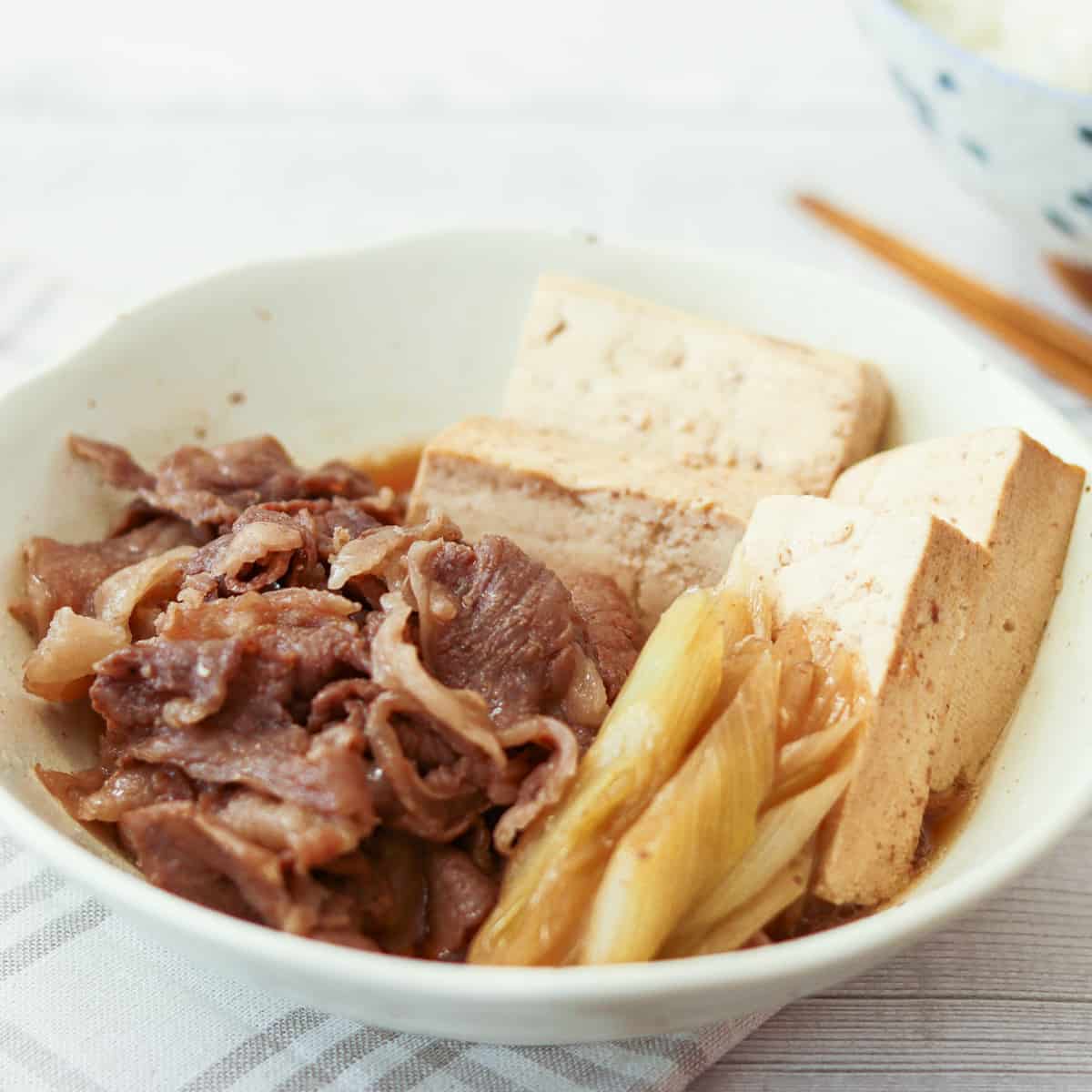
Niku Dofu (Simmered Beef and Tofu)
Equipment
- otoshi-buta (drop-lid) (You can easily make one by following the instructions above. If that seems like too much trouble, you can simply use a regular lid instead.)
Ingredients
- 6.3 oz thinly sliced beef
- 10.6 oz momen tofu (firm tofu)
- 3.5 oz Japanese leek (naganegi) (it can be substituted with regular leek)
- ⅗ cup water
Seasonings:
- 2 Tbsp sake
- 1 Tbsp mirin
- 1 ½ Tbsp sugar
- 3 Tbsp soy sauce
Instructions
- Wrap tofu in paper towels, place it on a microwave-safe plate without plastic wrap, and microwave on medium power (500W) for 2 minutes. Then, remove the tofu and let it cool.
- Cut the tofu into pieces about ⅘ inch (2 cm) thick.
- Cut beef into pieces 2-inches (5 cm) wide. Slice Japanese leek diagonally into ⅖-inch (1 cm) pieces.
- Put water and seasonings (sake, mirin, sugar, and soy sauce) in a pot and bring it to a boil.
- Once boiling, add the beef, tofu, and leeks, and let it simmer over low heat for 10 minutes, covering it with an otoshi-buta.
Notes
- You can store it in the refrigerator for up to 3 days.


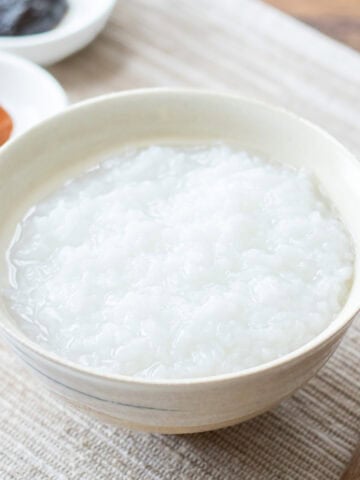
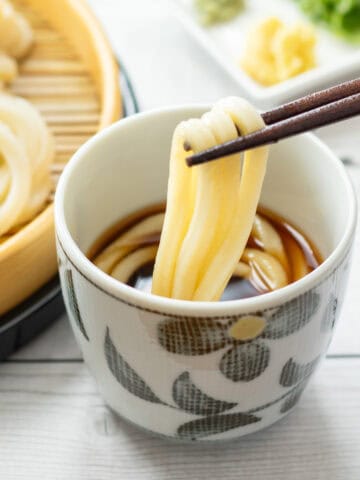

Leave a Rating and a Comment